Got a Christmas Cactus? Here's How to Keep it Happy, Healthy, and Blooming
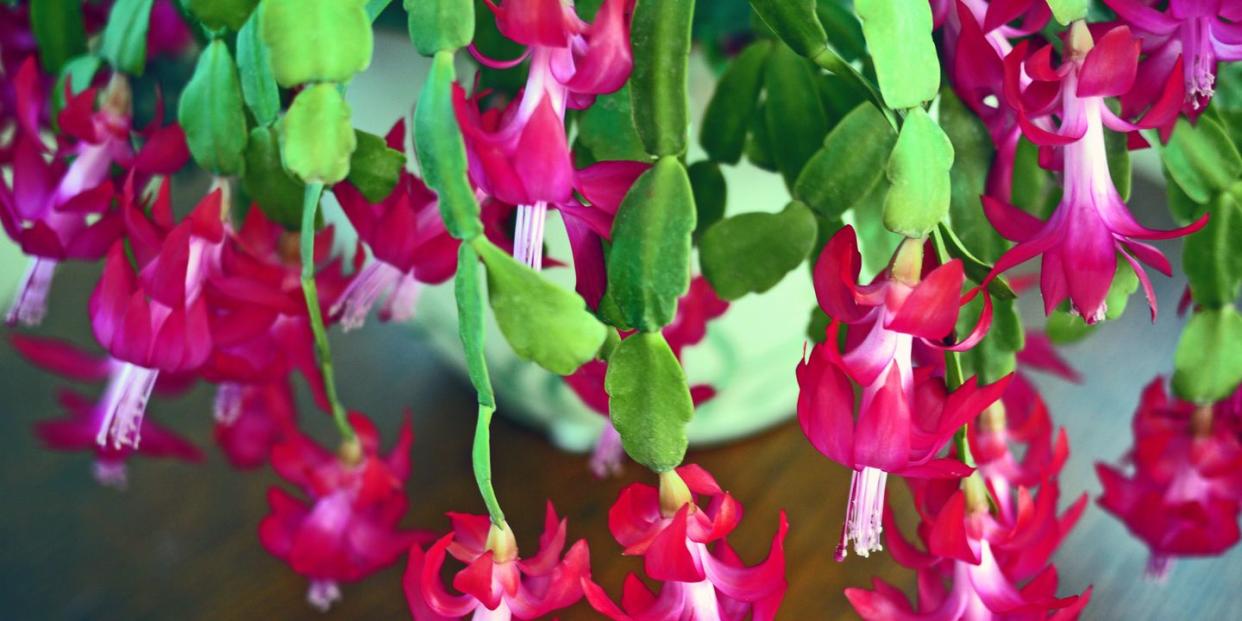
"Hearst Magazines and Yahoo may earn commission or revenue on some items through the links below."
The Christmas cactus is everywhere during the holiday season, with good reason. It's a blooming succulent that is easy to care for, has gorgeous flowers, and when properly tended can live up to 100 years! That's right! This plant can survive for decades, adding color to your holidays for generations. It makes a great holiday gift, too. That's a pretty great investment for a plant that's as inexpensive and un-fussy as the Christmas cactus!
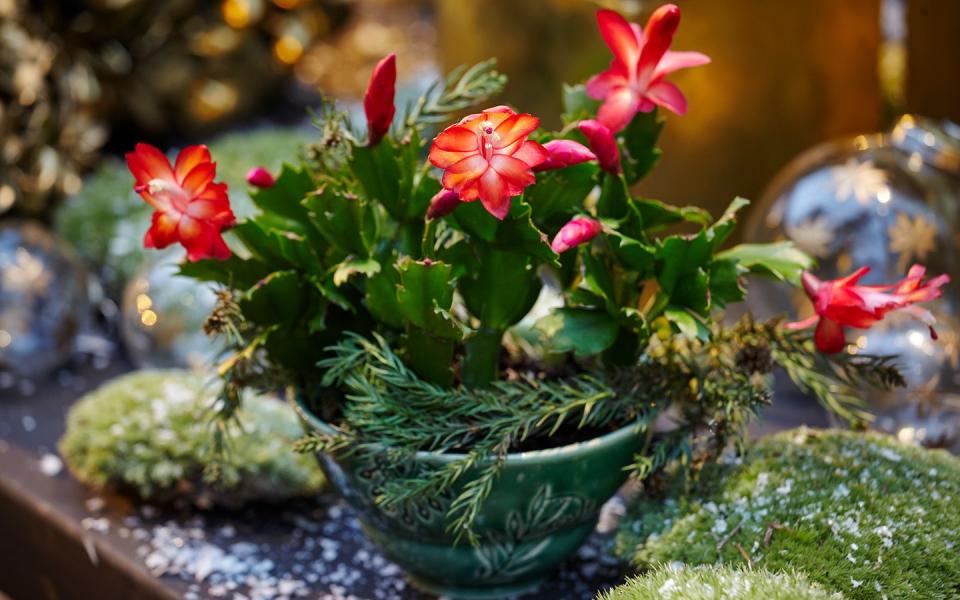
About the Christmas Cactus
Though they are cacti, they're not desert-dwelling plants. Technically several species under the genus Schlumbergera, the plants originated in the shady, humid forests of Brazil and actually grow as "epiphytes" in trees where the branches meet. They have stem segments and profuse flowers that can be a variety of colors including salmon, hot pink, deep red, pale pink, and white.
There are several different types that all are typically called "Christmas cactus," though some varieties look a little different and actually bloom at other times of year (such as Easter). But the care is the same for all of them. Here's what you need to know about this popular, easy-care plant.
Need more Christmas cactus tips? Check out our complete guide of how to care for a Christmas cactus, or read up on other types of cactus.
Exposure: Bright indirect light, never direct sunlight
USDA Hardiness Zones: 9-11 for outdoor plants; otherwise, it's a houseplant
Pests and diseases to watch out for: Fungus gnats, root rot
1. How to Plant and Propagate a Christmas Cactus
Once you bring your new cactus home, you'll want to leave it in its pot. Your Christmas cactus won't need to be re-potted for a few years because they actually bloom better when "pot bound." When you do replant, choose a pot that's only a tiny bit larger than the last one (maybe an inch or two more in diameter). Use well-draining potting soil, and make sure the pot has drainage holes.
If your plant gets too leggy or branches start dropping off because it can't support its own weight, prune it by cutting off a piece where two stem segments join.
Fun fact: You can turn this piece into its own plant! Stick it into the soil, place the pot in bright light, and keep the soil moist. It should develop roots in a few weeks. If you want to give the cutting an extra boost, dip the base of it in rooting hormone—though often the cutting will do just fine without this step.
2. How to Care for a Christmas Cactus
Christmas cactus plants need bright, indirect sun. They'll burn in direct sunlight, so if you're placing yours indoors near a west or south-facing window, make sure it's filtered with a sheer curtain. They like humidity, so if your house is dry indoors in winter, put it on a tray of pebbles, or place it near other plants.
Water when the top surface feels dry, and never let them sit in water. Christmas cacti prefer daytime temperatures of 65 to 70 degrees, and evening temperatures of 55 to 65 degrees.
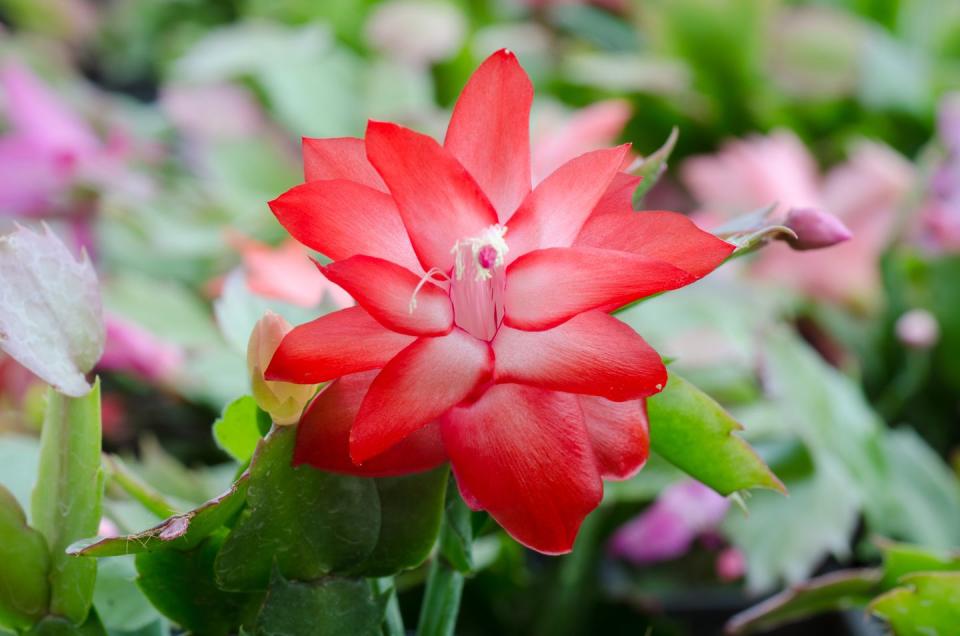
What's the difference between a Christmas cactus and a Thanksgiving cactus?
There are about six different species, and most get their names for the time of year when they bloom. Thanksgiving cacti, or Schlumbergera truncata, bloom in late fall. Christmas cacti, or Schlumbergera bridgesii, bloom about a month later. Easter cacti flower in—you guessed it—late winter to early spring.
The shape of the leaves (which are actually stems) also vary slightly, with Thanksgiving cacti having serrated edges and Christmas cacti featuring more rounded edges.
How to get a Christmas cactus to bloom
To make sure your cactus blooms well, fertilize monthly between June and August with a balanced houseplant fertilizer at half-strength. You can take it outdoors during the summer, too, but bring it back in before it gets too cold.
For about six weeks prior to blooming, the holiday cactus requires between 12-14 hours of dark to set buds. That means cool temperatures around 50-65 degrees, and no light (not even artificial). You may consider covering it during the day to ensure it will flower or moving it to a guest room or closet where it won't be exposed to nighttime lights.
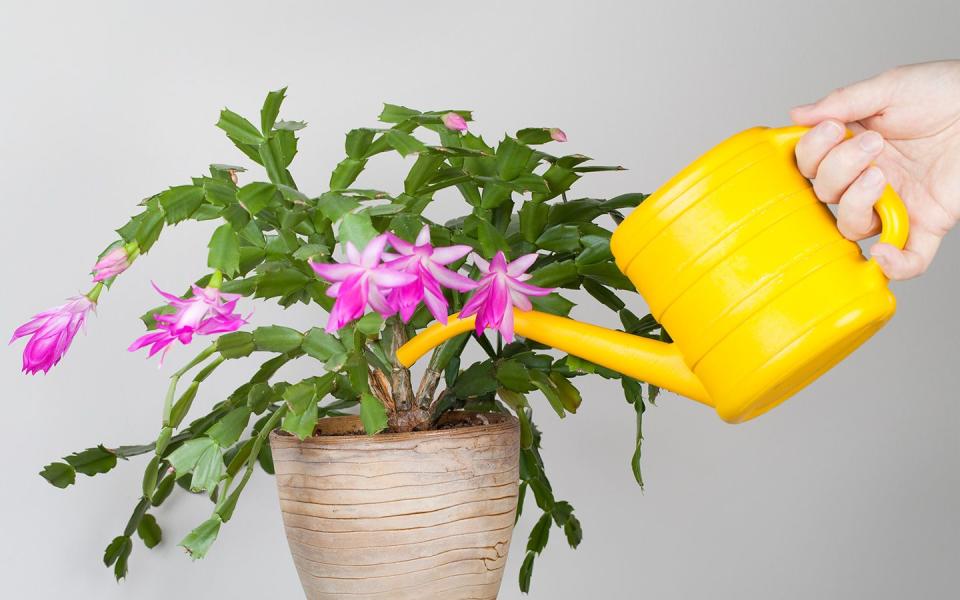
How often do you water a Christmas cactus?
Water the pot when the top inch or two are dry to the touch. Generally, Christmas cacti require less water during fall and winter and more in spring and summer.
Soak the plant through to the roots, but dump out the saucer after the plant drains. You don't want your cactus sitting in water, as that may cause root rot.
What kind of fertilizer do you use for a Christmas cactus?
Any blooming houseplant fertilizer will do (such as 20-20-20 or 20-10-20). Fertilize them every two weeks once buds appear. Feeding them monthly from spring through summer will help ensure you get a beautiful, full bloom around the holidays.
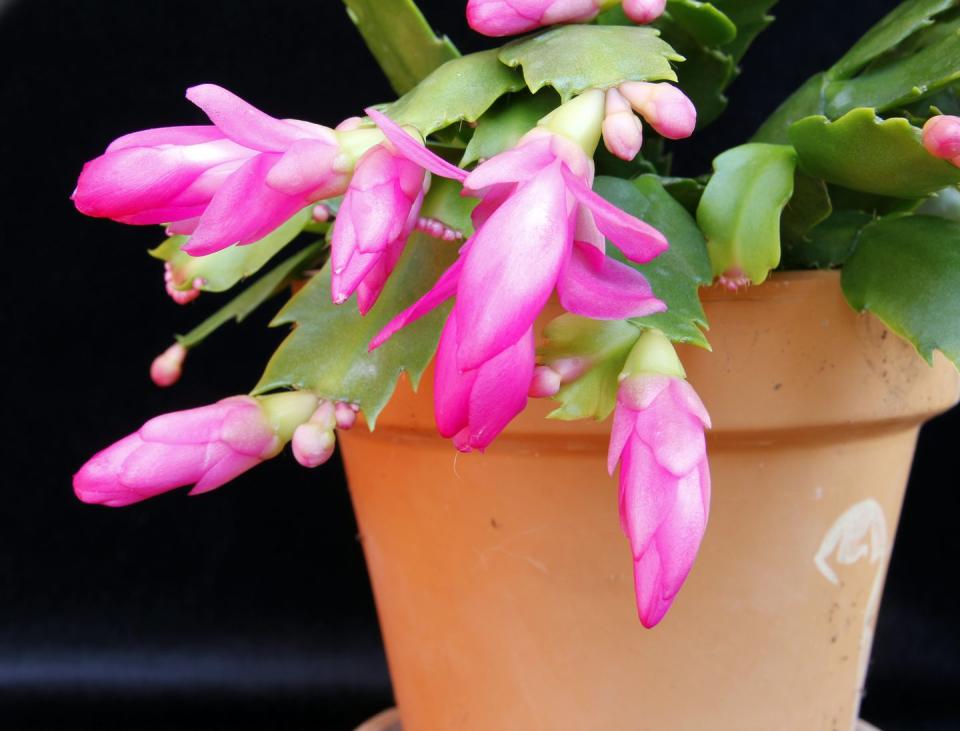
Do Christmas cacti need a lot of sun?
Although they enjoy plenty of bright sun, make sure it's indirect, as direct sunlight can burn the leaves.
Why are the leaves on my Christmas cactus limp?
If you under-water your Christmas cactus, you can expect the leaves to droop. To fix it, water more frequently—but take care to avoid overwatering, which can cause leaves to fall off (and root rot). Also, make sure your plant is located in the ideal spot—they like humidity, temps from 70 to 80°F, away from drafts or fireplaces. Spritzing them with water from a spray bottle or placing the pot over a gravel-and-water-filled dish will help provide humidity if your home’s air is on the drier side.
Are Christmas Cacti poisonous to animals?
If you have a dog or cat in the house, you don't have to worry about bringing one into the house. According to PetMD, the plant is nontoxic — though it's hard to digest, so if they chew a lot of it, your furry friend may end up with some GI issues, or vomiting.
GROWER TIP: Don't overwater your Christmas cactus! "They're a succulent and the pads get soft and mushy if you overwater," says Tim Pollak, outdoor floriculturist with the Chicago Botanic Garden.
You Might Also Like


